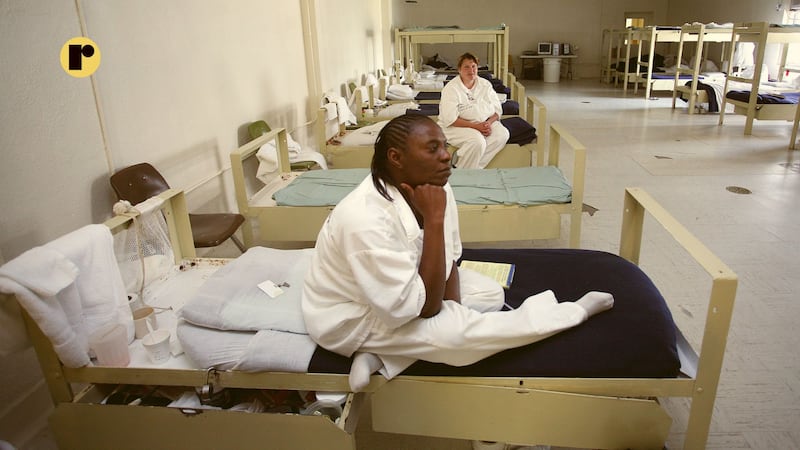
In a system where incarcerated individuals often earn mere pennies per hour, a $5 medical copay can represent a week’s wages. This stark reality is at the heart of a growing healthcare crisis in American prisons, where financial barriers are forcing inmates to choose between basic necessities and medical care. A new report by the Prison Policy Initiative (PPI) reveals that these copays are dramatically reducing access to healthcare for the nation’s 1.2 million state and federal prisoners, with devastating consequences for the most vulnerable among them.
The PPI briefing looks into the devastating effects, finding that people in prisons where copays cost more than a week’s pay are less likely to see a provider than those in prisons that have no or low copays. According to the Montana State Legislature, 40 states charge copays to incarcerated people seeking medical care for anything from checkups to dental work to getting medication. While not a copay in the traditional sense because it isn’t associated with insurance coverage, the fees can range from $2 to $5, which is significant to this population who often earn less than $1 per hour worked.
According to NPR, the average prison wage maxes out at 52 cents per hour. On the lower end, Statistica reports that inmates in Oklahoma can earn as little as 8 cents, 6 cents in Missouri and 3 cents in Louisiana.
For context, previous analysis published by PPI in 2019 calculated how each state’s copay would compare for non-incarcerated patients making minimum wage, finding that 14 states charged copays that would be equivalent to charging minimum wage workers over $200.
Christopher Blackwell, an incarcerated journalist in Washington detailed the dilemma many inmates faced in needing mental healthcare services during the COVID-19 pandemic in a 2021 Prison Journalism Project article.
“Mental health services offered to prisoners have been laughable. During the last year, mental health staff walked the tiers a handful of times offering a few seconds of conversation or a crossword puzzle. If we wanted to request an in-person appointment, it costs us a $4 co-pay, the equivalent of 9.5 hours of work based on the average pay of 42 cents an hour here,” he wrote.
Those $4 can determine whether someone will see the doctor or not, which some advocates say is the point.
“The fact that they’re making such little money means that this is actually a very prohibitive fee, and that’s the point. The point is not to make money for the prison system. The point is to deter people from seeking care, because health care systems in prisons are either not equipped, or sometimes just not interested in giving people the care that they want,” said Wanda Bertram, communications strategist at Prison Policy Initiative.
Incarcerated individuals work for nickels on the dollar, if they’re able to earn money at all. In California, for example, the state increased wages in April for some incarcerated workers, with pay now ranging from 6 cents to 74 cents. Though California eliminated its copay in 2019, becoming the first state to do so, many workers won’t reap the benefits of the pay raise, as the state also announced plans to cut almost three-quarters of its full-time jobs to half-time.
Some incarcerated people don’t have the ability to earn income at all. According to a 2022 ACLU report, Alabama, Arkansas, Florida, Georgia, Mississippi, South Carolina, and Texas don’t pay the majority of their inmates for labor.
Per the report, nearly one in five inmates have not received a single health visit since becoming incarcerated, impacting those with chronic conditions the most. During their first year in prison, 22% of people with chronic physical conditions had not been seen by a provider, and of the 400,000 people in state and federal prisons with chronic mental health conditions, 33% had not received mental health treatment and 34% of people with prescriptions for their mental health conditions had not received their medication.
“People in prison not getting health care, it’s not going to make their problems go away, right? It’s just going to make them more serious down the line,” said Bertram. “Copays are demonstrably reducing access to care, and in prisons, it seems like folks who are pregnant are not even getting basic health care like obstetric exams.”
The latest Bureau of Justice Data from 2019 estimates that 4% of women admitted to state prisons were pregnant at the time, but very few received the standard prenatal healthcare typical for a healthy pregnancy. The PPI report found that 9% of pregnant people in state prisons didn’t receive obstetric examinations, 26% did not see a specialist or outside provider, and about half did not receive education about pregnancy from a healthcare provider once they entered prison.
Dr. Carolyn Sufrin, an OB-GYN at Johns Hopkins School of Medicine, has served pregnant people in prison and researched their health outcomes. In 2023, she told NPR that the type of care provided to pregnant people who are incarcerated varies greatly.
“Despite a constitutional mandate that prisons and all institutions of incarceration provide health care to people inside, there is no mandatory oversight that these institutions must follow. And so you get a wide range … of some places that are actually providing relatively good pregnancy care and others that are providing harmful, neglectful or absent pregnancy care,” she said.
Since the fall of Dobbs v. Jackson Women’s Health Organization, which revoked federal protection of abortion rights and led states to determine their own reproductive health laws, more women have been incarcerated while pregnant. According to Pregnancy Justice, an organization advocating for the rights of pregnant people, over 200 pregnant women faced charges related to their pregnancy or pregnancy loss in the year after the Dobbs decision. Last year, Reckon spoke to the organization’s president, Lourdes Rivera, who said the uptick in arrests is linked to a trend of fetal personhood, which grants fetuses and embryos in utero the same or more rights than the pregnant person.
“This ideology has been used to escalate attacks and ultimately gut abortion rights over the years, and it’s been embedded in state laws and judicial decisions,” Rivera said.
States are not required to charge copays. In 2019, Illinois ended its $5 copay, a decision that was announced months before a report by a court-appointed expert looking into healthcare in the Illinois Department of Corrections found that one third of the prison deaths they reviewed were preventable. Eight other states, including Nebraska, New Mexico, and New York, don’t charge copays or don’t have a medical copay policy.
Inmates may even face medical debt. In September, research by the National Consumer Law Center found that the majority of incarcerated people with chronic conditions could not afford medical assistance without accruing debt, impacting Black communities the most, as they are disproportionately incarcerated. However, according to the National Consumer Law Center, there is no comprehensive data to point to exactly how much medical debt is accrued in prison. Bertram says that in many instances once an incarcerated person is in debt, any wages earned or money deposited into their account will be debited to the amount they owe.
“Family members will talk to us about this and say, you know, I’m just trying to support my loved one inside, but they have all these debts, and so whenever I send them $50, half of it gets deducted to pay for stuff that they owe for co-pays and other things,” she explained.
Several reports support the claim that being incarcerated takes years off a person’s life. According to the Vera Institute of Justice, every year spent in prison cuts a person’s life expectancy by two, and overall, the U.S. life expectancy would be five years higher if not for the impact of mass incarceration.
Still, the prison population continues to age, contributing to more chronic conditions and mental illness becoming more common. NPR reported in March that the number of incarcerated people age 55 and older is five times higher than it was in the 1990s.
As the prison population ages, chronic conditions and mental illness are becoming more common. The number of inmates with at least one chronic condition increased from 56% in 2004 to 62% in 2016, according to previous research by PPI, and prison systems are realizing they aren’t equipped to manage their needs.
“You see it visibly, but you see it in your health care budget and in your health care needs and your housing needs,” Bryan Collier, the executive director of the Texas Department of Criminal Justice, told NPR, which reported that geriatric inmates are the fastest growing demographic in the state in March. “You don’t usually build prisons with nursing home-type housing or geriatric housing or even wheelchair housing.”
This post was originally published on this site be sure to check out more of their content.








